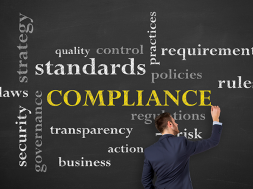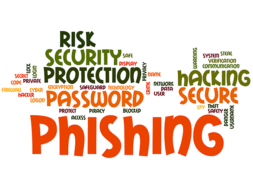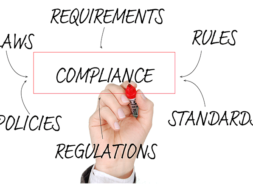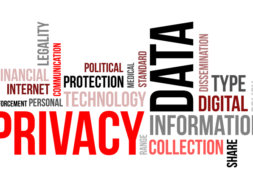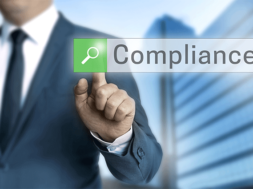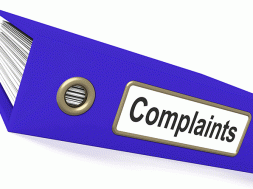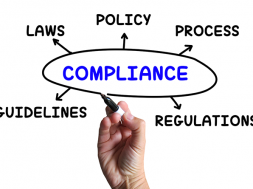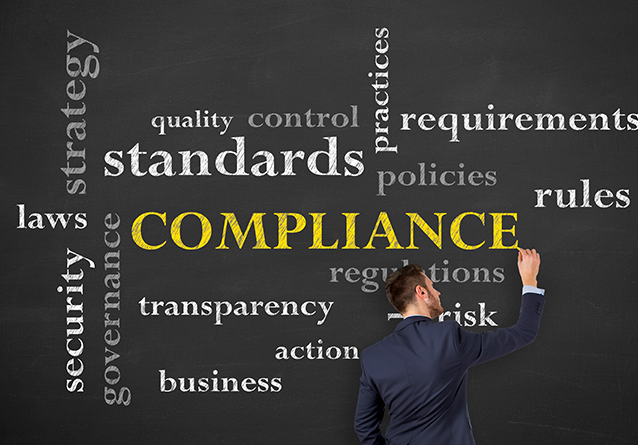
Surviving (or even Thriving in) an ED Program Review
By Sherry Gray, Dan Brozovic, Powers Pyles Sutter & Verville PC
The dreaded Program Review. The U.S. Department of Education (“ED” or the “Department”) can conduct one at your Title IV institution at any time. Program reviews can demonstrate compliance with Title IV rules, but they can also lead to significant compliance findings and liabilities. Is your institution ready?1
This article will walk you through the overall process of a program review, from the announcement of the review through its resolution.
Our goal is to help you understand what to expect during a program review and how to prepare and help equip you to ensure the process goes as smoothly as possible. We also discuss the most common program review findings – especially those that are more likely to result in liabilities or significant follow-up work – and other tips and best practices.
The Department’s authority and the purpose of program reviews
The Department conducts program reviews of institutions that participate in the federal student aid programs authorized by Title IV of the Higher Education Act of 1965 (“HEA”).2 The HEA requires program reviews to be performed on a “systematic basis designed to include all [Title IV] institutions of higher education,”3 and ED regulations require both institutions and their third-party servicers to cooperate.4
The Department conducts program reviews to evaluate compliance with Title IV requirements, identify liabilities owed to the Department for errors in compliance, and improve future institutional capabilities,5 and as many longtime observers will know, the focus between “improvement” and “identifying liabilities” shifts from time to time. Any and all aspects of an institution’s Title IV compliance may be reviewed, including its policies, procedures and practices; its student files; its financial aid, academic and fiscal records; and its consumer information disclosures.
Program reviews are conducted primarily by the ED’s School Participation Divisions (“SPDs”) – also commonly referred to as case teams – often with support from other ED offices, such as the Office of General Counsel.
When to expect a program review
While program reviews may occur at random or periodically – especially when an institution has gone several years without one – there are a few situations more likely to prompt ED to conduct a review.
First, SPDs often plan program reviews to coincide with another major ED event, such as a recertification, change in ownership, or release of a letter of credit.
For schools under common ownership with other Title IV institutions, ED may conduct “system-wide” reviews.
Second, program reviews can be prompted by adverse events or significant negative outside attention. Examples include institutional self-reports of non-compliance; reports to ED from state licensing agencies or accrediting bodies; actions or investigations by law enforcement and consumer protection agencies and state attorneys general; adverse media reports and press attention; and significant student or employee complaints.
Finally, the HEA instructs the Department to prioritize several categories of institutions for program reviews. These include institutions with high cohort default or withdrawal rates, significant changes in year to year Title IV disbursements (which could be relevant to institutions that acquire new locations or programs), and institutions referred by a state or accrediting agency.
Program review types and scope
When the Department decides to conduct a program review it prepares by gathering data about the institution and establishing a program review plan, which covers the scope and the type of program review.
The SPD will also review the institution’s policies and procedures relevant to Title IV administration, look to the institution’s website for required consumer and gainful employment disclosures, and in some cases, also coordinate and share information with external parties like accrediting agencies and state licensing agencies.
This preparatory work results in a “program review plan,” which addresses program review type, scope, location (on-site or off-site), duration, and other factors. Of course, ED can change or expand the scope at any time, even after the review has commenced.
There are three types of program reviews (standard, campus security, and closed school) and four levels of program review scope (general assessment, focused, incentive compensation, and joint), with a standard, general assessment program review being most common.
Focused program reviews cover one or more specific Title IV areas, and are more likely when the SPD has a specific compliance concern.6
General assessment and joint reviews are typically conducted on-site (with most site visits lasting one week), while focused reviews are often conducted remotely. However, the procedures and overall steps are comparable regardless of the location of the review.
The scope of a program review also includes the time period under review. The default period is the current and most recently-closed award years, although additional prior years can be added, especially if the SPD is concerned about non-compliance. Unfortunately, given the amount of time it can take ED to resolve a program review, we have also seen SPDs add one or more subsequent award years to the review period simply due to the passage of time.
The program review announcement
The Department usually calls a school’s financial aid office to alert them that it will conduct a program review. This call is typically followed by a confirmatory Program Review Announcement Letter, an example of which can be found in ED’s Program Review Guide. Two to three weeks’ advance notice is most common, and although the Department can sometimes be flexible regarding the timing of the review, they prefer to adhere to their originally proposed review dates.
ED may also decide to provide no advance notice of a program review! That is, ED may “notify” you when it arrives to conduct its site visit. Very short (or no) notice program reviews tend to occur in extraordinary circumstances when ED has a concern about serious, current non-compliance.
Preparing for a program review
The bulk of an institution’s preparatory work tends to involve responding to the SPD’s advance requests for documentation, which usually are voluminous. Schools generally get two to three weeks (although the period can be shorter) to gather documents covering the award years under review.
The exact nature of the SPD’s document requests will vary, but for a standard, general assessment review, requests typically cover school catalogs; copies of policies and procedures relevant to Title IV (Satisfactory Academic Progress, Return of Title IV Funds, Recruiter Compensation, Verification, etc.); copies of Campus Security Reports; copies of financial and consumer disclosures; examples of forms, applications and worksheets used in Title IV administration; and student body information (as specified by ED, including a spreadsheet of all Title IV recipients). Reviewers can also ask for additional materials while on-site and after the visit, and ED expects unrestricted access to the institution’s relevant electronic and paper records.
This is yet another reason that institutions are well advised to store data in a centralized, organized and easily retrievable fashion (and if not, to organize the files before the review!). It is critical that institutions be able to provide timely and complete information and documentation. Trouble doing so can make reviewers suspicious and doubt your administrative capability – or worse. ED can propose liabilities in areas the institution failed to document.
Testing institutional readiness
Institutions looking to test their readiness for a program review have a few different options.
First, ED’s Office of Federal Student Aid offers a series of assessment modules covering a variety of Title IV compliance issues.7 These modules can help walk your institution’s compliance professionals through the various substantive and procedural requirements using a “checklist”-type format.
Many institutions also choose to conduct mock program reviews and/or regular compliance assessments.
In a mock program review, “reviewers” arrive at an institution’s campus (announced or not) and conduct something approximating a real-life program review, which can be as in-depth as the institution chooses. Compliance assessments are a more limited form of testing, such as a desk review of the institution’s Title IV policy and procedure manual. Mock program reviews and compliance assessments can be conducted internally – especially at large institutions with central compliance offices – or with the help of your outside advisors.
Finally, the Program Review Guide describes the many substantive areas that might be covered in a program review, and issues reviewers look for – and find!8 While these resources should not be treated as all-inclusive – a program review can address literally any aspect of the Title IV requirements and regulations – they could be helpful to institutions seeking an overall understanding of what to expect.
Top program review findings
According to ED’s Program Review Guide, the most common program review findings are:
- Crime awareness requirements not met (potential fine)
- Verification violations (potential substantial liabilities)
- Return to Title IV calculation errors (potential substantial liabilities)
- Student credit balance deficiencies
- Drug abuse prevention requirements not met
- Student status – inaccurate/untimely reporting
- Entrance/exit counseling deficiencies
- Consumer information requirements not met
- SAP policy not adequately developed and/or monitored (potential substantial liabilities)
- Inaccurate recordkeeping
In our experience, program review findings also are common in the following areas, which can lead to substantial liabilities:
- Proof of graduation/verification of high school completion
- Lack of program/location approvals
- Clock/credit hour conversion (program length)
- Attendance
- Academic calendar
- Eligible program enrollment
Finally, while they do not result in as many findings, two areas that ED commonly reviews in-depth are:
- Incentive compensation rule compliance
- 90/10 calculation
Conduct of the program review – site visit, fieldwork and analysis
The program review itself always begins with an “entrance conference,” which is an opportunity for introductions among the reviewers and school personnel. The reviewers will discuss the scope of the review and overall process, any pending documentation requests, and potentially the reason the review is being conducted. For its part, the institution will be asked to describe to the reviewers how Title IV aid is processed at the institution, and should also address other logistics, like establishing points of contact and identifying a secure room the reviewers can use while on-site.9
Following the entrance conference, the SPD officials will begin their review of institutional data and records. This almost always includes a review of a sample of student files, which the reviewers will select from the institution’s Title IV population.
The reviewers also can interview any students or employees they choose.
The Department considers it a violation of the Title IV regulations to not provide access to personnel, and any confidentiality or nondisclosure agreements must be waived. The institution does not have the right to insist on a representative being present or to record interviews, but ED and the individual interviewees have that option. Interviews with third-party servicers or other outside sources involved in the administration of an institution’s Title IV programs may also be required.
The Program Review Guide lists the categories of questions that employees in various areas are typically asked about, and an institution given notice of a program review would be wise to review these with the relevant personnel.10
For both on-site and off-site program reviews, the fieldwork portion concludes with an “exit conference,” at which SPD and school personnel discuss required actions and next steps. The program reviewers also will identify any outstanding items, and institutions are often required to provide additional or follow-up documentation in response to the reviewers’ questions.
In years past, the reviewers often gave a preliminary assessment of any potential findings during the exit conference, which can still occur, but has become less common. And of course, institutions are always responsible for their own Title IV compliance, so you should not accept any description of findings (or lack thereof!) as definitive.
Common mistakes during a program review
There are a few common mistakes institutions make during program reviews that can be resolved with a bit of advance preparation.
The first mistake is having disorganized student files. It should be evident to the reviewers that your student files have an organization system and that this system is followed. This will help build confidence in the school’s processes and also make the reviewers’ lives easier, which will make your life easier.
Another set of easily-avoided mistakes relates to personnel. An institution should ensure that the appropriate personnel are available to answer questions within their substantive domain. In addition to showing the reviewers how seriously you take the process, having the right staff interact with the reviewers can help resolve misunderstandings about policies or practices before they become more serious.
That said, institutions and their staff should not feel pressured to give an immediate answer to every question that is asked. We have seen cases in which a staff member does not understand ED’s question – or was not the right person to ask – and ends up giving incorrect or incomplete information. School management may not always learn about these issues in time to correct them. Your team should know that sometimes, “I will get back to you” or “I will put you in touch with the person who can answer that” is the correct and acceptable answer.
Last, institutions should be sure to track ED’s follow-up questions and informational requests. The on-site portion of a program review can involve a flurry of activity, and a centralized tracking system – which need not be elaborate – can help ensure you do not lose sight of these. You may find this information helpful when it comes time to respond to ED’s findings.
ED’s findings: the program review report
Once ED completes its analysis, it informs the institution of its proposed findings via a Program Review Report (“PRR”).11 A PRR lists all findings noted during the review, even if those findings have since been resolved.
Per the Program Review Guide, ED anticipates issuing PRRs within 75 days of a review. However, anyone who has undergone a program review would say this is highly optimistic – in our experience, an institution can wait years for a PRR, although we have heard more than once that ED is trying to issue PRRs in a more timely fashion.
The institution should carefully review the PRR once received to determine whether it concurs with the findings. Does the institution disagree that any student files contained errors? Is the PRR mistaken about what an institutional policy said or how it was applied? Does the school agree with the stated error rates? When assessing a PRR, keep in mind that it is possible to submit interim responses to ED or request additional facts from ED if errors are not clear.
Also, keep in mind that this is not the time to agree in order to be agreeable.
Schools have a right to and should defend their Title IV compliance because compliance findings can have a lasting impact either based on assessed liabilities, additional reporting requirements, or the risk of repeat findings.
If deemed warranted, ED can also refer an institution to other Department offices or to external agencies, and it need not wait until the program review process is complete before doing so. This is rare, but can happen when the SPD suspects serious noncompliance, or there is credible evidence of waste, fraud, or abuse of Title IV program funds.
Responding to the program review report
Institutions are required to respond to the PRR, typically within 30-60 days of receipt, although extensions are granted.
Most findings result from deficiencies in institutional policies, procedures and disclosures, or from errors identified in the student file sample. For findings in which there is no associated monetary liability (e.g., exit counseling failures), or where the prevalence (error rate) of the finding is low, and assuming the finding is accurate, the institution will have to correct its policy or procedure and/or resolve the errors found in the student file sample, but need not go further.
However, if there is an actual or potential monetary liability (e.g., Pell over-awarding; SAP errors) and the error rate is larger (generally at least 10 percent), the institution will be required to correct the errors in the sample and conduct a file review.
In a “file review,” the institution must review the entire Title IV population – or a subset with a relevant characteristic, like withdrawals – to determine if the asserted noncompliance found in the student sample is more widespread. The review usually covers the award years the subject of the program review, but can cover additional award years. We have seen ED request file reviews for six full award years!12
A last group of findings relates to institutional eligibility, financial responsibility or reporting, or other institutional actions. These findings are among the least common but can be the most severe, including 90/10 compliance, required state licensure, accreditation, and similar issues that impact Title IV eligibility. The appropriate resolution of these findings varies case by case (and the PRR will include instructions). You would want to give these findings your full attention, and should always seek to show that there is no liability or that the liability is limited.
Addressing findings
Where there is a defect in a policy or procedure, consider implementing corrected versions immediately in order to avoid additional liabilities. The Program Review Guide suggests you wait to implement revisions until the SPD confirms they are acceptable – and you should consider doing so where there is no actual or potential liability involved – but when waiting may cause additional liabilities to accrue, consider making interim changes while waiting to hear back.
On the other hand, when dealing with student-specific findings, make certain you agree that a liability is owed before returning or repaying any Title IV funds. While institutions can resolve issues when responding to the PRR, any liabilities that get repaid before the program review process is complete cannot be appealed or disputed later (and ED often instructs schools not to repay any liabilities until directed to do so).
Final program review determination and appeals
Following the institution’s response to the PRR, the SPD will issue a Final Program Review Determination letter (“FPRD”), which is ED’s final statement of findings, liabilities, and required actions.
Per the Program Review Guide, the estimated timeframe for issuing a FPRD is within 30-90 days after receipt of the institution’s final and complete PRR response including supporting documentation.
The reality is that the FPRD is nearly always issued much later, especially in complex cases.
An FPRD may or may not require further action. It will require no further action if the institution’s response to the PRR demonstrates that all findings were resolved and all liabilities were paid or otherwise eliminated. Otherwise, the FPRD will specify what further action the institution needs to take, including making student-level adjustments and/or paying liabilities.
Institutions that disagree with FPRD findings resulting in a monetary liability can file an appeal within 45 days of receiving the FPRD. This appeal involves an administrative litigation proceeding conducted by an ED hearing officer (i.e., administrative judge). Again, any liabilities paid or resolved during the program review process cannot be part of this appeal!
Conclusion
An ED program review can be an intensive process and should be treated like the significant institutional event that it is. If we could provide one parting thought, it would be this: a program review can happen at any time, and you don’t want to wait until being notified of one to start preparing! They say the best defense is a good offense. Here, that means being cognizant of the school’s policies, procedures and overall compliance status, and taking proactive steps to remedy any weaknesses before they become program review findings.
Resources
- This article is intended for informational purposes, and does not constitute legal advice. No party should act or refrain from acting before seeking individualized advice from counsel as appropriate.
- 20 U.S.C. § 1099c.
- Id.
- 34 C.F.R. § 668.24(f).
- ED Office of Federal Student Aid, Program Review Guide for Institutions (2017) (available at: https://ifap.ed.gov/programrevguide/attachments/2017ProgramReviewGuide.pdf).
- Joint program reviews are the least common, and according to the Program Review Guide, are conducted when ED sees the potential for “adverse action and significant liabilities.”
- Available at https://ifap.ed.gov/ifap/FSAAssessments.jsp.
- In particular, see Chapter 4 (ED Review of Institution Processes and Data) and Chapter 5 (ED Review of Student-level Information) of the Program Review Guide.
- For off-site program reviews, an entrance conference will most often be conducted by conference call.
- Lists are provided for personnel performing the following functions: Academic/Registrar, Admissions, Financial Aid, Business Office, Placement, and Campus Security. For example, Financial Aid Office personnel should expect to be asked about their own job duties, financial aid processes (e.g., determining need, awarding, verification, disbursement), institutional policies (e.g., Satisfactory Academic Process), use of third-party servicers, and similar topics.
- In cases where there were no findings or only minor (isolated, non-systematic, and since resolved) findings and no follow-up action is required, a school receives an Expedited Determination Letter instead of a PRR. Unfortunately, these are fairly rare.
- Where more than 100 files are involved, ED may allow the institution to rely on projections, whereby the error rate from a sample (selected by ED) is assumed across the entire file review population. This can save significant effort, but is not allowed in situations where the liability would result in a return of funds to individual students (e.g., R2T4 errors and unpaid credit balances).
SHERRY GRAY is a principal and a member of the Education Group at Powers. As a regulatory specialist with more than 25 years of experience in higher education law, Sherry advises colleges, universities, and other postsecondary institutions on all aspects of state and federal laws and accreditation standards applicable to institutions and their partners, helps defend clients against adverse actions initiated by government and accrediting agencies, and counsels clients on mergers and acquisitions. Areas of expertise include regulatory approval requirements, compliance reviews, financial responsibility, mergers and acquisitions, and federal grant standards. Sherry has assisted a wide array of institutions and their sponsors in the resolution of government and independent audits, investigations, student lawsuits, and similar actions alleging failure to comply with regulatory requirements or accrediting agency standards.
Contact Information: Sherry Gray // Principal // Powers Pyles Sutter & Verville PC // 202-466-6550 // Sherry.Gray@PowersLaw.com // www.PowersLaw.com // @PowersLawFirm (Twitter)
DAN BROZOVIC is an associate in the Education Group at Powers, representing institutions of higher education, investors, and others in the education space. Dan’s experience in the sector enables him to provide practical, real-world advice that clients can understand and implement with confidence. Dan focuses on advising clients in transactions regulated by the U.S. Department of Education, and in regulatory matters and administrative litigation before the Department of Education. In addition, he counsels educational institutions regarding compliance with federal, state, accrediting agency, and grant funding agency standards. Dan also has significant experience assisting in civil litigation and arbitration matters, with a particular emphasis on electronic discovery issues.
